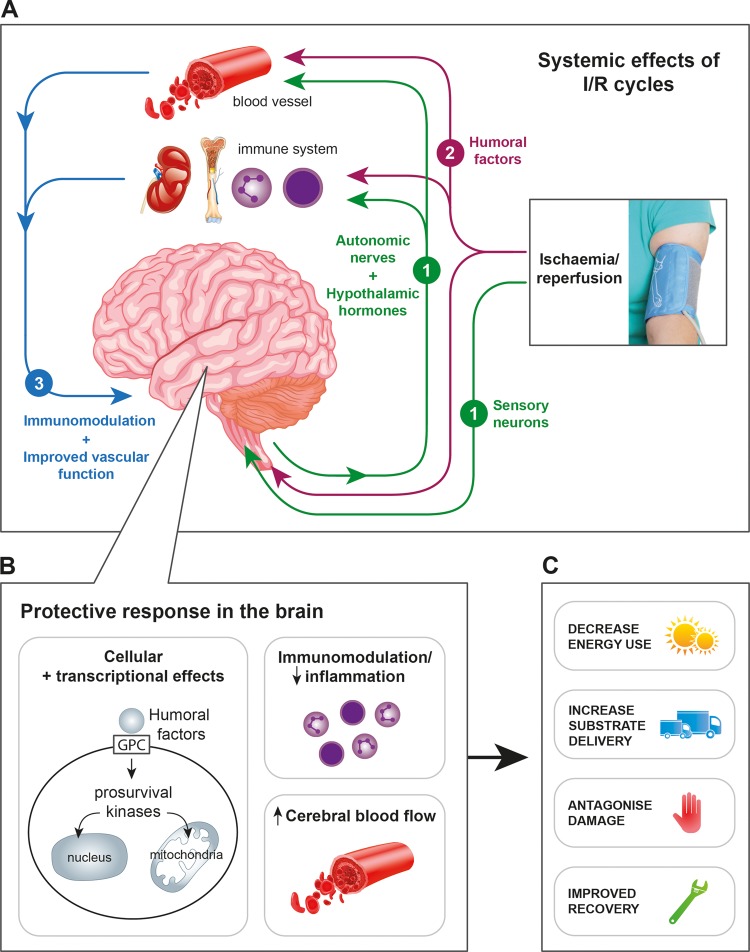Figure 2.
(A) The neuroprotective mechanisms of RIPostC are thought to involve three inter-related pathways induced by remote limb ischaemia. (1) The neuronal pathway involves activation of both local sensory nerves and the autonomic nervous system to mediate protective effects, including the release of humoral factors; (2) the humoral pathway involves endogenous protective factors, including locally acting autocoids and bloodborne humoral factors that travel to the brain and (3) the systemic response includes immune modulation and blood pressure regulation. (B) Within the brain, the three pathways converge to increase cerebral blood flow, ameliorate neuroinflammation and to activate cell survival mechanisms. Direct pro-survival actions within cells are mediated via G-protein-coupled (GPC) receptors and include mitochondrial protection (maintenance of potassium-sensitive ATP channel, prevention of mitochondrial permeability transition pore opening) and transcriptional regulation (both genetic and epigenetic modulation) in the nucleus. (C) Following remote ischaemic stimulus after HI, the effects of these neuroprotective mechanisms are to decrease energy consumption; to increase substrate delivery and offset cerebral secondary energy failure; to protect against cell death and to augment long-term recovery and repair. HI, hypoxia-ischaemia; I/R, ischaemia/reperfusion; RIPostC, remote ischaemic postconditioning.

